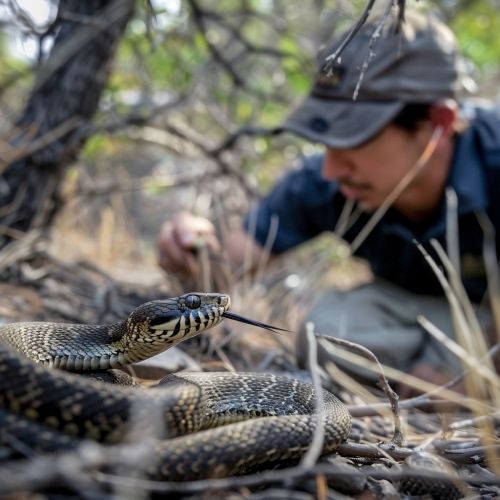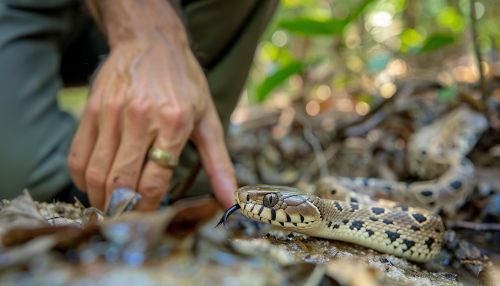Herpetology
Introduction
Herpetology is the branch of zoology concerned with the study of amphibians (including frogs, toads, salamanders, newts, and caecilians (gymnophiona)) and reptiles (including snakes, lizards, amphisbaenids, turtles, terrapins, tortoises, crocodilians, and the tuataras). Biologists who specialize in this field are known as herpetologists.


History
The history of herpetology is interlinked with the broader history of biology. The study of reptiles and amphibians dates back to at least the ancient civilizations of Egypt and Greece, where species such as the Nile crocodile and the European viper were recognized and described. However, it was not until the 18th and 19th centuries, with the advent of systematic biology and taxonomy, that herpetology emerged as a distinct scientific discipline.
Scope and Importance
Herpetology covers all aspects of the biology of amphibians and reptiles, from morphology and physiology to behavior, ecology, and evolution. It also includes the conservation of these animals and their habitats. Herpetologists play a vital role in our understanding of biodiversity, ecosystems, and environmental change.
Amphibians
Amphibians are a group of cold-blooded vertebrates that includes frogs, toads, salamanders, and caecilians. They are characterized by their life cycle, which typically involves a larval stage in water followed by an adult terrestrial stage.
Frogs and Toads
Frogs and toads belong to the order Anura. They are distinguished by their short bodies, webbed fingers and toes, bulging eyes, and the absence of a tail.
Salamanders
Salamanders are members of the order Urodela (or Caudata). They are characterized by their slender bodies, blunt snouts, long tails, and the presence of both lungs and gills in many species.
Caecilians
Caecilians are the least-known group of amphibians, belonging to the order Gymnophiona (or Apoda). They are legless and worm-like, adapted for a burrowing lifestyle.
Reptiles
Reptiles are a group of cold-blooded vertebrates that includes snakes, lizards, turtles, crocodiles, and tuataras. They are characterized by their scaly skin and, in most species, the ability to lay hard-shelled eggs.
Snakes and Lizards
Snakes and lizards belong to the order Squamata. Snakes are distinguished by their legless bodies and highly flexible jaws, while lizards typically have four legs and external ears.
Turtles
Turtles, terrapins, and tortoises belong to the order Testudines. They are characterized by their bony or cartilaginous shell, which acts as a shield.
Crocodiles
Crocodiles are large aquatic reptiles that belong to the order Crocodylia. They are known for their powerful jaws, long and slender bodies, and armor-like scales.
Tuataras
Tuataras are reptiles that belong to the order Rhynchocephalia. They are unique among living reptiles in having a pronounced parietal eye, a light-sensitive organ on the top of their head.
Conservation
Many species of amphibians and reptiles are threatened by habitat loss, climate change, pollution, disease, and over-exploitation. Herpetologists play a crucial role in their conservation, conducting research to inform management strategies and raising awareness of their plight.
